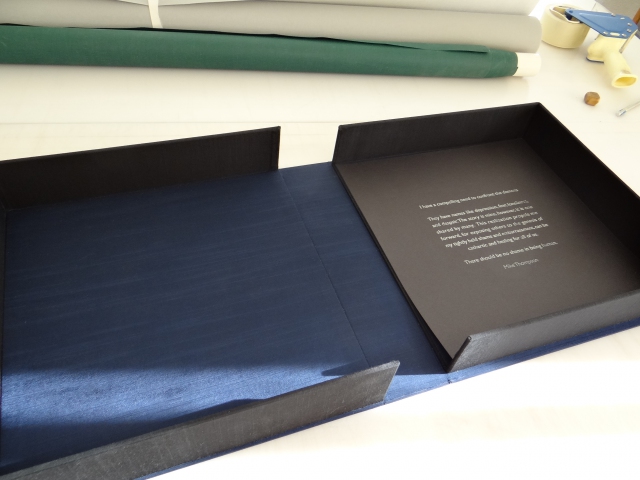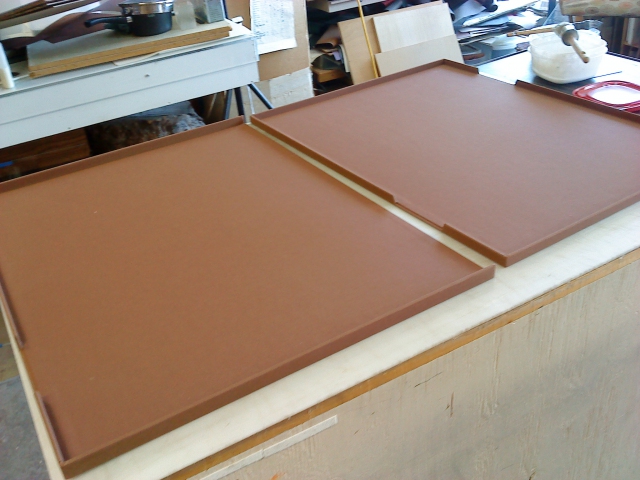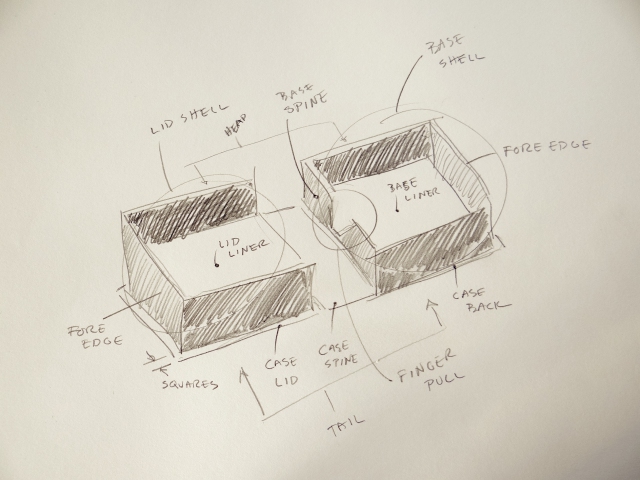The Clamshell Box
This is the classic. A favorite of photographers the world over. One of the major variations on this design is to leave the spine wall of the base completely open. When working with a customer to design a clamshell box, I encourage them to think about the primary use of the box and the physical process of moving the pictures during presentation.
Subtle cues to mood
 An open spine wall will allow the pictures to be slid easily form one shell to the next during presentation. The wall with a finger-pull forces a slower, more ritualized presentation with the new image always nested, enclosed, and isolated in the base shell. I believe these details add to the mood of the experience. They certainly effect the pacing.
An open spine wall will allow the pictures to be slid easily form one shell to the next during presentation. The wall with a finger-pull forces a slower, more ritualized presentation with the new image always nested, enclosed, and isolated in the base shell. I believe these details add to the mood of the experience. They certainly effect the pacing.
Safe handling of your work
Inclusion of a spine wall also adds a degree of security for your images. Though it's hard to imagine a scenario where work could fall out of a clamshell, it is possible to imagine work extending out into the spine area when the box was closed. If the sheets were light, there is a small possibility of a bent edge or corner. And with the spine open, sliding, rather than lifting the work is possible. For matted work there shouldn't be a problem. But you might wan to avoid the resulting abrasion with loose prints.
 Lifting prints out of the shell that has a finger pull in the spine wall may be fine for small prints. However, what happens with large work? Lifting the pieces out from one edge may now provide adequate support for the piece. For these situations, customers often choose to have a second finger pull in base fore edge. In fact, finger pulls can be placed in any or all of the 4 base walls.
Lifting prints out of the shell that has a finger pull in the spine wall may be fine for small prints. However, what happens with large work? Lifting the pieces out from one edge may now provide adequate support for the piece. For these situations, customers often choose to have a second finger pull in base fore edge. In fact, finger pulls can be placed in any or all of the 4 base walls.

The images in this portfolio are very emotionally charged and challenging. Given this, Mike and I agreed, leaving the spine wall open so there were the smallest number of distractions and difficulties in showing the work would be the best plan.

This box was designed for Kent Manske to hold a small number of large silk screen prints. Finger pulls were put in opposing corners so the work could be well supported when lifted out. Also note the finger pull in the lid fore edge near the tail. This allows full support of the prints when they are moved back to the shell.
